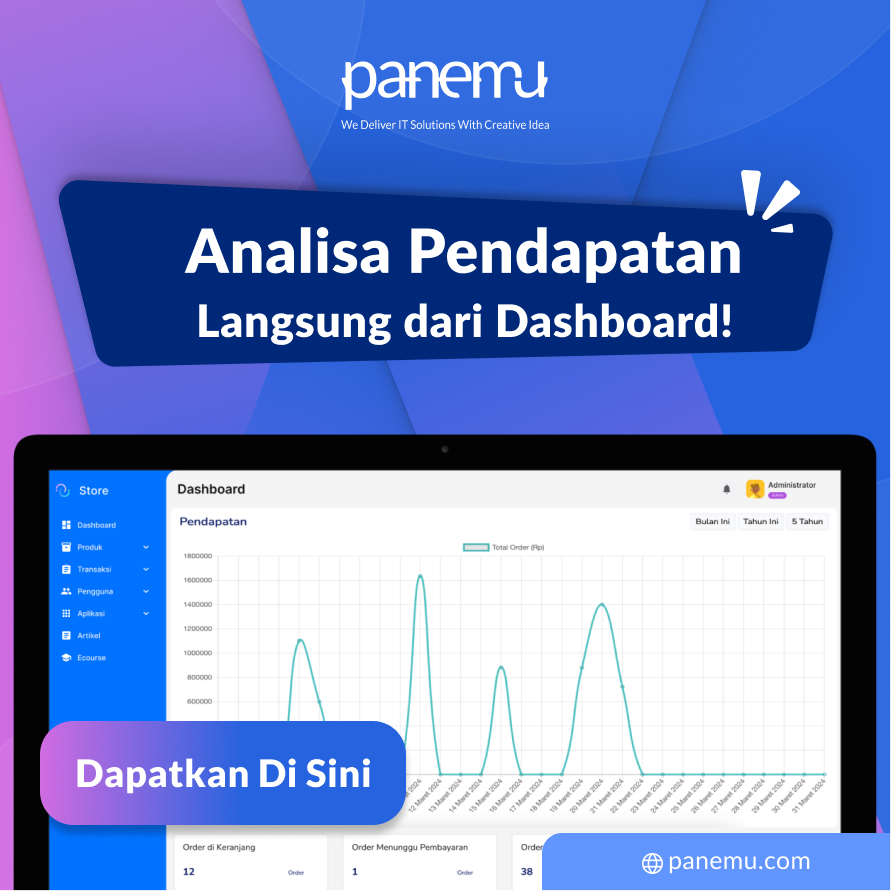In industries with complex operations, such as manufacturing, mining, oil and gas, and utilities, effective asset management is a key factor in ensuring operational continuity and cost efficiency. One of the fundamental elements in asset management that is often overlooked is Bill of Material (BOM). BOM is not just a list of spare parts, but is a blueprint that provides structure and transparency in material management, inventory and asset maintenance.
Without a well-structured BOM, companies will face major challenges in spare parts management, such as excess stock, shortages of critical components, and unplanned downtime. This article will discuss how BOM is a key pillar in asset management, increasing operational efficiency, and supporting data-based decision making.
What is a Bill of Materials (BOM)?
A Bill of Materials (BOM) is a structured list that lists all components, raw materials, and spare parts required to assemble or maintain an asset or equipment. BOMs are often categorized into several types based on operational needs, including:
- BOM Teknik (Engineering BOM): Details the product structure from a design perspective.
- Manufacturing BOM (Manufacturing BOM): Shows how a product is made on a production line.
- Maintenance BOM (Maintenance BOM): Provides a list of spare parts and components required for asset maintenance and repair.
In the context of asset management, Maintenance BOM is the most crucial because it provides detailed information about every part necessary to maintain the reliability and performance of the asset.

Why is BOM Important in Asset Management?
1. Guarantee the Availability of the Right Spare Parts
One of the biggest challenges in asset maintenance is availability of the right spare parts at the right time. A well-managed BOM allows a company to:
- Identify critical spare parts that must always be available.
- Optimize inventory levels to avoid overstock or stockout.
- Speed up the procurement process with accurate spare parts information.
For example, in the mining industry, the failure of one small component on a main machine can cause downtime costing up to billions of rupiah per hour. With an accurate BOM, companies can prevent this risk by ensuring the right spare parts are available.
2. Increase Maintenance Efficiency and Speed
When technicians have to look for information about spare parts or repair procedures, the time spent can be very long if the BOM is not properly documented. A clear and easily accessible BOM enables:
- Accelerate the troubleshooting and repair process.
- Increased accuracy in spare parts identification.
- Reduce the possibility of using incompatible components.
In industrial environments that require speed and precision, such as chemical plants or power plants, a systematic BOM can significantly reduce downtime.
3. Support Inventory Management and Procurement Strategy
An effective BOM enables procurement teams to:
- Forecast spare parts needs more accurately.
- Implement a just-in-time (JIT) strategy to reduce storage costs.
- Ensure consistency in specifications of components purchased from vendors.
With a BOM that is integrated in the Enterprise Resource Planning (ERP) system or Computerized Maintenance Management System (CMMS), inventory management can be done more proactively and data-based.

4. Reduce the risk of errors and non-conformities
Without a clear BOM, there is a big risk of using the wrong or out-of-spec parts. This error can cause:
- Greater system failure due to use of incompatible components.
- Waste of budget due to purchasing unnecessary spare parts.
- Work safety risks due to the use of spare parts that do not comply with standards.
With an accurate BOM, all departments, from operations to procurement, have the same reference, thereby reducing the possibility of errors.
Effective BOM Implementation
To maximize the benefits of BOM in asset management, companies need to implement the following strategies:
- Standardization of BOM Data and Format
Ensure that all information in the BOM is documented uniformly in a format that is easy for all related parties to understand. - BOM integration with Asset Management Systems
Integrate the BOM into the system Enterprise Asset Management (EAM) or CMMS for easy access by maintenance and procurement teams. - Regular Updates and Validation
The BOM should be updated regularly to reflect changes to assets and maintenance strategies. - Improved Team Training and Awareness
Make sure operations, procurement and maintenance teams understand the importance of BOMs and how to use them effectively.
Conclusion
A Bill of Materials (BOM) is not just a list of parts, but is a vital instrument in an efficient asset management strategy. With a well-structured and managed BOM, companies can increase operational efficiency, ensure the availability of the right spare parts, and support data-based decision making.
For companies that want to optimize their asset management, implementing an effective BOM is no longer an option, but a necessity. With technological solutions such as Panemu, which provides the service data material master, inventory asset management, dan cataloguing service, companies can ensure that the BOM used truly provides added value in daily operations.
Does your company have an optimal BOM strategy? If not, now is the time to transform!
